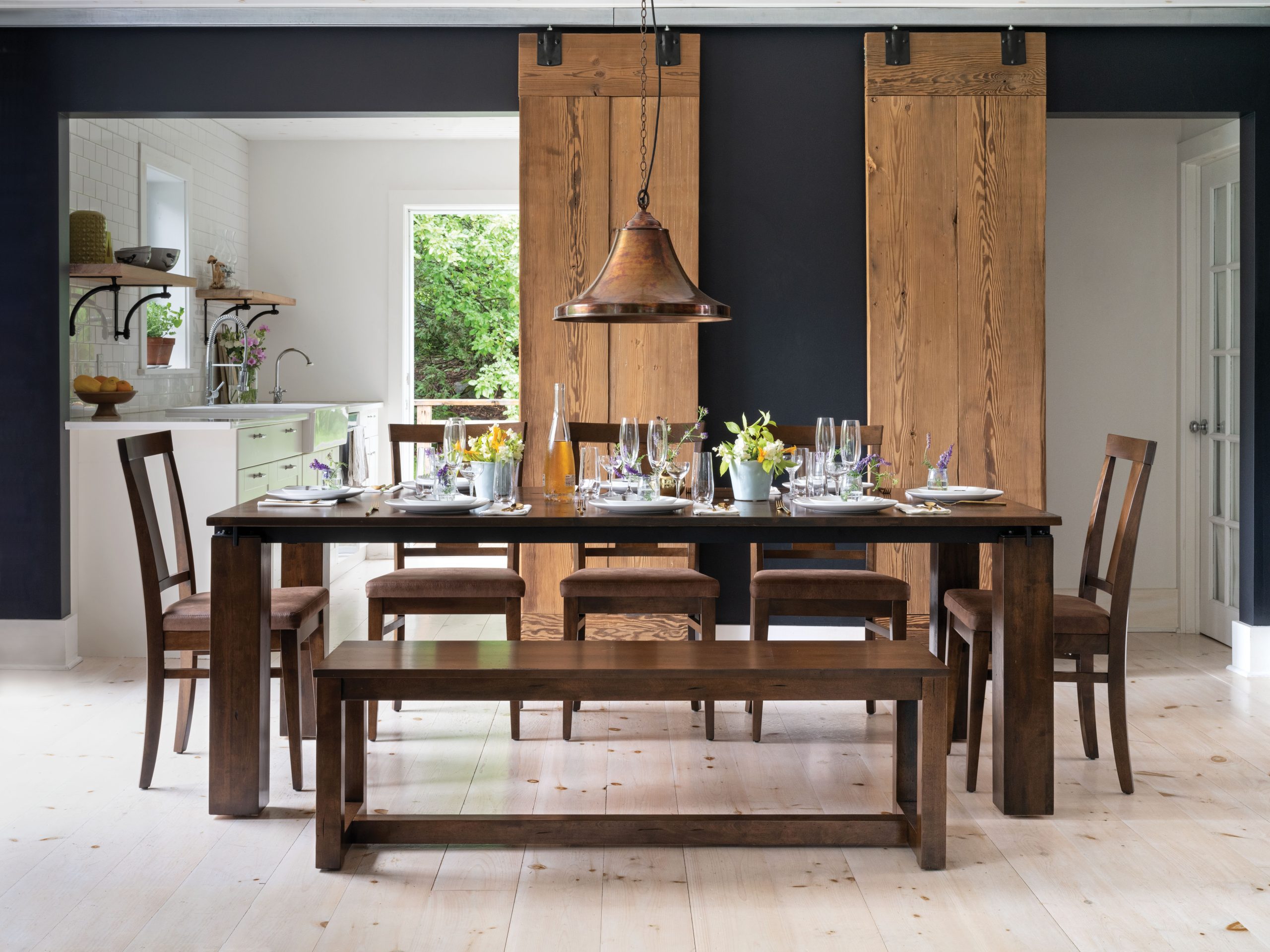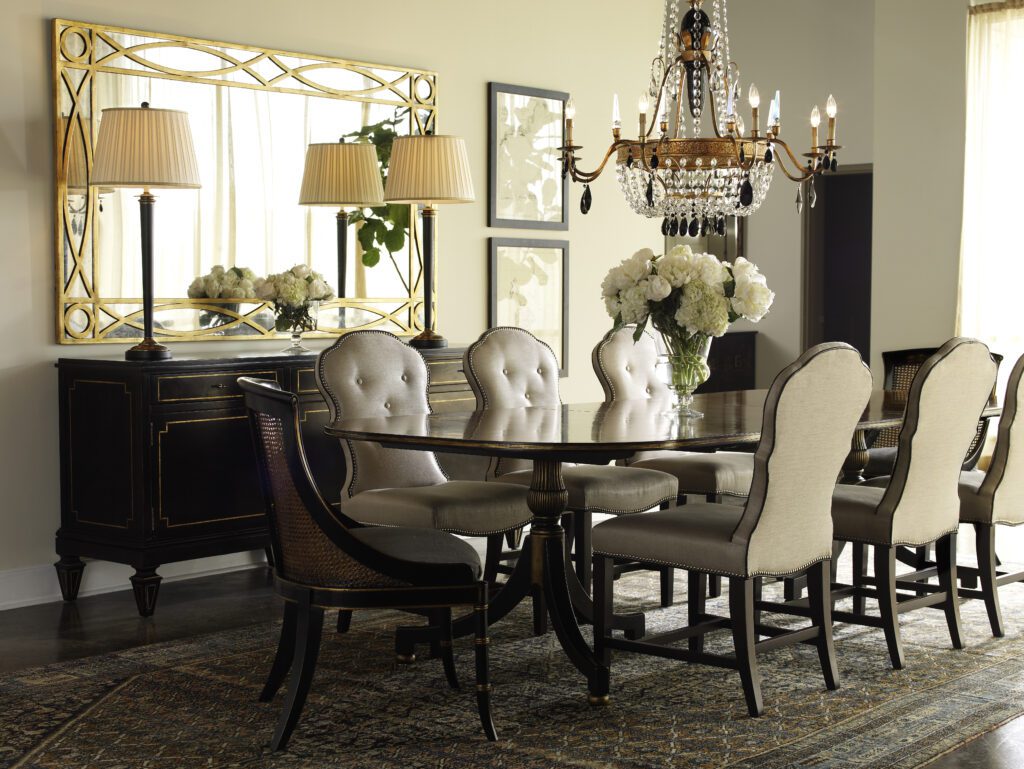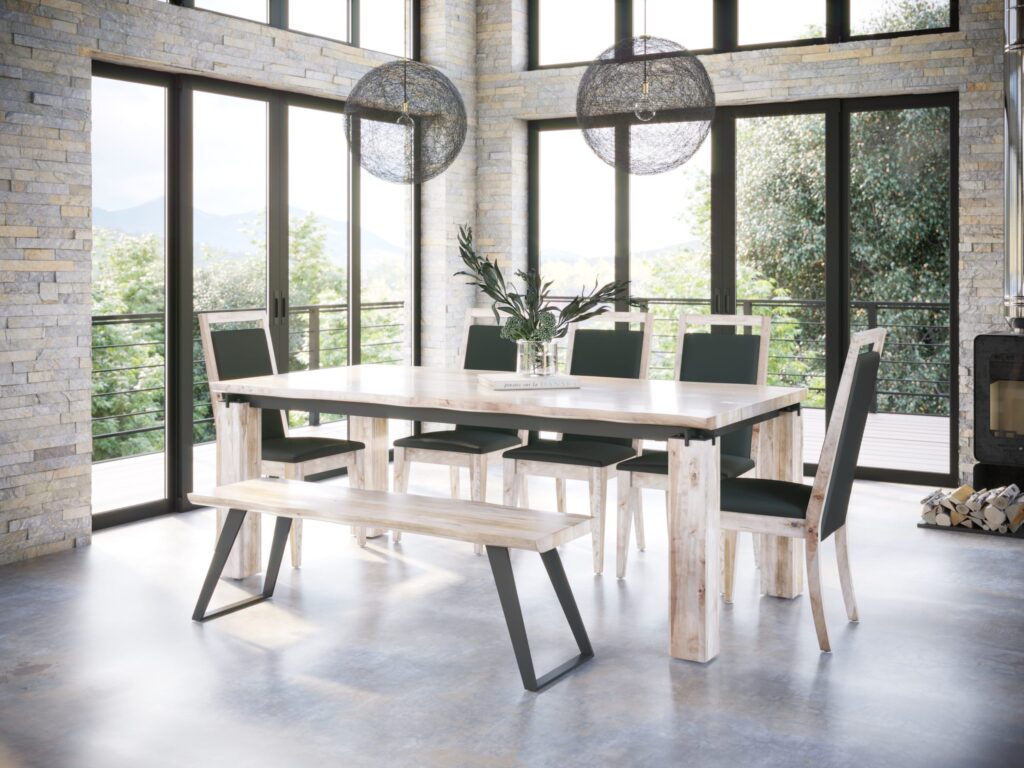While there are a whole host of subtle design elements that go into a well-crafted space, one does not need the artist’s eye to appreciate the importance of lighting. We have all been in situations where we felt annoyed by overly harsh, glaring fluorescent lights or frustrated by not being able to see clearly enough under too-dim lighting.
Selecting the correct lighting can create a room in which people feel relaxed and comfortable, and what more could we want for our families and guests? The following tips are provided in order to assist you in transforming your dining room into just such a space.
Two or More Sources of Light
In general, the main source of light in your dining room should be over the table. There should also be additional lights along the walls or the ceiling to give the impression of layers of light rather than flatness and to avoid heavy shadows.
Over The Table
The over-the-table light can be anything from an elegant chandelier to sleek, minimalist recessed lighting. There are literally countless options of dining room lights for all tastes and styles. Consider the following when selecting lighting for over your dining room table.
Choose the right size
A lighting feature that is too big or elaborate for your dining room can make the space feel crowded or cluttered. It can also sometimes come off as pretentious or overbearing. Selecting something too small, on the other hand, can make your dining room seem scant or bare, as though it is lacking an important element. And indeed it is. The other obvious issue with choosing a too-small lighting fixture is that it can result in an uncomfortably dimly lit room.
Choose the right shape
A round or soft-edged light is the best choice to go over a round dining room table. Oblong or rectangular fixtures are a better match for rectangular-shaped tables. While this may seem to go without saying, it is important to keep this in mind if you are tempted to buy, for example, a lovely antique wrought-iron round chandelier for your long, rectangular table. As beautiful as the fixture may be, the ends of your table will be outside of the light’s range, effectively cutting off those places at the table.
Wall Lighting
Additional dining room lights should be installed along the walls to accentuate art, or to create visual interest if your walls are particularly bare. These secondary lights can also be mindfully placed to eliminate shadows or fill in places your primary light source can’t reach. The range here is also quite large, from studio-style directional cans to inlaid track lighting to sconces.
Install Dimmers
Different levels of light are appropriate depending on the type of mood you want to create for your gathering. A romantic dinner for two might be best illuminated by mysterious and intriguing low lights and accented with candles. A holiday gathering with extended family will require a more high-energy brightness, and a routine family dinner is likely most comfortable with a medium level of light.
What color light is best for my dining room?
This is largely a matter of personal choice and taste. Warm white light, aka yellow light, is easier on the eyes and creates a cozy and comfortable atmosphere. Cool white light is more stimulating and can appear brighter than yellow light, which might encourage a livelier feel around the table.
Seek Professional Guidance
When selecting unique and lovely lighting fixtures, Albarado’s Fine Furnishings is your best bet for a high-end home furniture store in Lafayette, LA. Our experienced and knowledgeable staff will give you a complimentary interior design consultation to help you find the perfect dining room light fixture you’ll love or even remodel your entire dining space to enhance your home’s beauty and showcase your personal style and taste.



